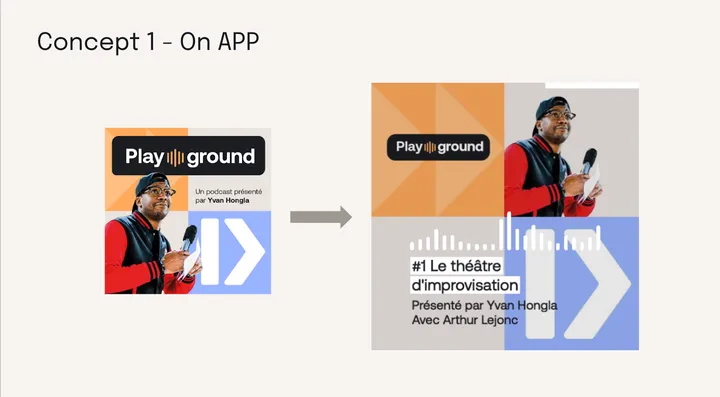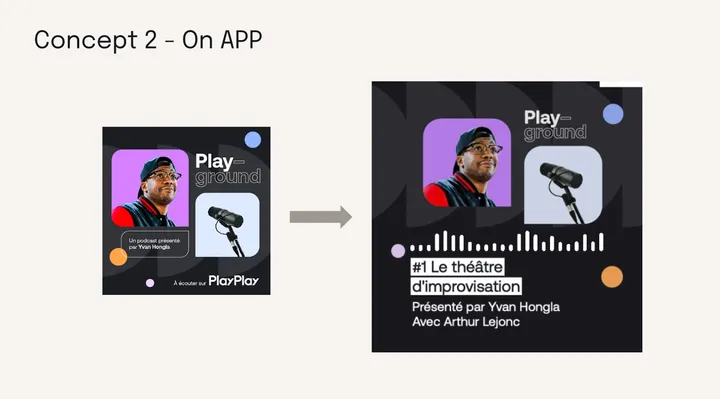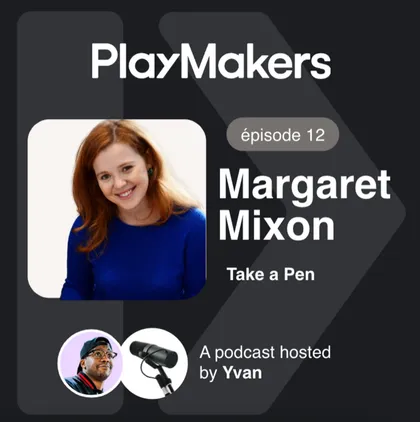A podcast isn’t the first thing that comes to mind when you’re trying to improve communication within your company. Yet, investing in one can yield far-reaching benefits for your organization — and we’re talking from experience.
As a fully remote company spread across two continents and four countries, PlayPlay needed a way to constantly bring employees together without disrupting the typical remote work perks. After much brainstorming, Playmakers was born — an internal podcast that helps our fully-remote workforce build deeper connections with one another beyond formal, work-centered interactions.
Like us, you might be looking for a way to build a more engaged workforce. Or maybe no one reads your lengthy company-wide email updates anymore because they’re hard to digest and far too time-consuming for your busy employees to read. If this is the case, an internal podcast is your ticket to stepping up your internal communication efforts and re-igniting employees’ excitement about your organization.
In this article, we’ll show you exactly how to set up a successful internal podcast based on insights from our in-house podcasting experts.
What is an internal podcast?
An internal podcast is a podcast made by employees for employees. This means it is created and distributed exclusively within an organization for the employees and other internal stakeholders — like board members.
Internal podcasts do not replace emails or other information-sharing methods. Instead, treat it as another tool in your internal communication stack — especially for understanding how your employees feel about company-wide policies and diving deeper into issues that affect their well-being.
Say you just rolled out an unlimited vacation policy in your organization; the HR team can use the podcast to explain how the policy works and answer anonymous employee questions. Or, after a few months, you can invite some employees to discuss the performance of the policy based on their personal experiences. Even better, you can use this podcast to help your employees get to know each other by interviewing them about their outside work passion projects and interests – that’s what Playmakers is about!
What are the key use cases for internal podcasts?
Internal podcasts serve a variety of purposes, including:
1. Internal communication
Use podcasts to update your employees on company initiatives, policy changes, and upcoming events.
Let's say your company just acquired another business. After sending an email or Slack message to inform employees about this development, you can host a podcast episode with one of the company’s co-founders to discuss the reasons for the decision and its potential impact on the team. This provides real value, as it humanizes the decisions made and provides more context than a generic email.
2. Employee introductions
Think about the last time a new employee sent a Slack introduction message. How much of what they shared can you remember? Not much.
Many people hardly pay attention to employee introduction messages because they are monotonous. Luckily, internal podcasts can help here.
Your internal podcast can be the “get-to-know-you” platform for new or even long-term employees. It’s a more interactive way for everyone in the company to learn about the new joiners and what makes them unique.
Instead of asking newbies to share monotonous introduction messages about themselves, invite them to the podcast. They can chat about their experiences, why they joined the company, and what they look forward to. You can also host group conversations — like a podcast episode with all employees who joined the company in a particular month.
3. Training and development
Host lunch and learn podcast episodes as part of your company’s learning and development strategy. Say you’re a remote team; invite an employee to the podcast to discuss how they plan their typical workday for work-life balance or their top productivity tools.
Many employees might not have the chance to dig into your company’s extensive knowledge library, but they can spare thirty minutes on a Friday to listen to a podcast episode teaching relevant work or life skills.
4. Employee feedback
Use internal podcasts to know your employees' thoughts about your latest policies and company initiatives in real-time. This can help leaders and managers understand employee perspectives and make informed decisions.
Say your company launched a peer review program; invite employees to discuss their experience, challenges, and ideas for improving the program. You can build all of that easily with our podcast video maker.
What are the benefits of starting an internal podcast?
With an internal podcast, you can:
1. Improve employee engagement
Only 23% of the global workforce is engaged in the workplace, per Gallup’s 2023 State of the Global Workplace report. One of the reasons for low employee engagement is poor workplace communication. Your employees feel unimportant when they do not understand company policies and how they affect them.
Internal podcasts can bridge the gap between employees and decision-makers in your company. Employees can invite members of your leadership team to discuss policy changes and ask questions in real time. Simultaneously, the company leadership can use this platform to gather employee feedback to improve policy execution and overall decision-making.
2. Boost employer branding
Employer branding cuts down your time-to-hire and attracts A+ candidates to your organization. For example, more than 70% of job seekers will only apply to companies with strong employer brands.
People are more likely to believe what your employees say about your brand. So, to build a strong employer brand, you need to convert your employees into willing brand advocates. One way to do that is to promote your brand internally with a podcast.
An internal podcast allows you to discuss the motivations and impact of your company policies. For example, a remote work policy looks excellent on paper, but it becomes more powerful when employees share how it allows them to nurse their sick child or care for an aged parent without quitting their jobs.
These stories win employees over, and they’ll happily promote your company to the people in their network without you even asking.
3. Strengthen team bonding
More than 80% of respondents to a Gusto survey say having a sense of community at work is crucial. Internal podcasts help build a sense of community in the workplace by encouraging employees to interact with one another — outside of task-based conversations.
Internal podcasts create a shared listening experience for team members. When employees listen to the podcasts, they can discuss and reflect on the content together. This shared experience can spark discussions, build camaraderie, and strengthen team dynamics.
For example, PlayPlay’s CEO listens to each of our podcast episodes and reaches out to the guests to share what stood out for them — and many of our employees appreciate this gesture.
How to start your own podcast in 7 steps
An internal podcast requires the same level of preparation as a podcast for marketing or monetization purposes. But it is pretty easy to pull off if you follow these five steps.
1. Set a goal
Your podcast goal is what you want to achieve with it, and it will guide every other decision you make during the planning process.
Your goal should be employee-centered because that’s how you’ll get them to participate in the podcast actively. For instance, our Playmakers podcast aims to foster deeper connections among employees — especially as we are a remote-friendly company with employees across two continents, Europe and North America. For you, the goal can be to turn employees into brand advocates or scale learning and development.
Whatever it is, ensure that your goal is specific, measurable, achievable, realistic, and time-bound. For example, don’t say, “We want the podcast to drive learning and development.” Instead, say, “The podcast will be the main learning and development channel by Q3, 2023.”
Having clear goals makes it easier to measure the impact of your podcast. Say your goal is fostering deeper workplace connections; after a specific period, you can survey employees to know if they feel better connected, thanks to the podcast.
2. Get approval from stakeholders
Securing stakeholder approval early removes any barriers that can affect podcast execution. For example, the last thing you need is delaying production because the finance team hasn’t signed off on your budget. Or canceling episodes frequently because podcast hosts are too busy to record.
Get approval from anyone involved in the podcast execution, directly and indirectly — including podcast hosts, your internal communication team, editors, the finance team, and the like. This can be as simple as discussing your idea with potential hosts after work — like we did for the Playmakers podcast. Or it may involve writing a formal request letter to get everyone on board.
3. Design your visual identity
Visual identity is the overall look and feel of your podcast. It includes colors, typography, and even your podcast name. Once you have these things, you can start promoting your podcast.
The first thing we did was to choose a name for the podcast. We had several options but ultimately decided on Playmakers because it captured the podcast’s lighthearted tone and narrative structure — that is, employee-led conversations that make PlayPlay.
Next, we created three design concepts, based on a benchmark of other successful internal podcasts. The first one matched our brand colors entirely and featured the PlayPlay logo.
![Why You Should Create an Internal Podcast for Your Company [and How to Do It]](/_astro/internal_podcast_b3826eb79d_Z20Mgj0.webp)







